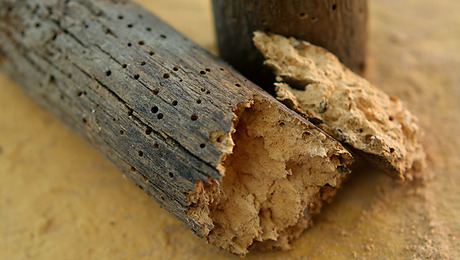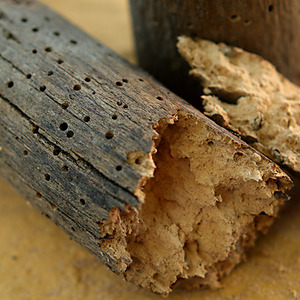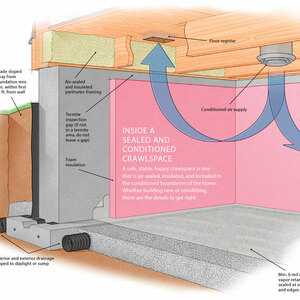*
I’m looking for some answers to a problem I just encountered. I was finishing out a staircase where the general contractor had specified and supplied material. I had many problems with wood movement on this project, but one in particular baffled me. I was using 1 1/4″ x 11″ pine for skirt boards. These were applied to the outside of the stairs and cut to fit tight between fir posts. After a couple of days almost all of the joints had opened at the heel of the plumb cut making it appear as if the angle was miscut. The posts themselves had had some earlier twisting problems, but all the rail joints that I cut to them remained tight, so I can’t attribute the problem to their further movement. The pine skirtboards had been stained on both sides prior to my working with them. It just seemed odd to me that they all pulled away at the heel of the cut. Anybody got any answers for this?
Discussion Forum
Discussion Forum
Up Next
Video Shorts
Featured Story

Learn how to fight wood-boring beetles and prevent home infestations with expert advice from Richard D. Kramer, an authority in pest control.
Highlights
"I have learned so much thanks to the searchable articles on the FHB website. I can confidently say that I expect to be a life-long subscriber." - M.K.

















Replies
*
You'll find this in mitres of wolm. decking and rails. I think it has to do with drying and the angle of the cut. A square cut shrinks evenly. The mitre cuts all seem to shrink differently along the mitre. That moisture is a sneaky thing.
*Pine is particularly nasty to work with because it's usually quite moist when purchased so the effects of drying are much more pronounced than with kiln dried hardwood.Even if the pine were dried in a kiln that doesn't mean that it's particularly dry, and usually pine is dried not much drier than green lumber.Angled cuts change angle when wood shrinks and swells. That's because wood shrinks (or swells) along its width, but not its length. Thus, a cut made at 45° will not be at 45° under more or less moisture. Try to picture a board with a 45° cut at the end. If the width changes, but not the length, the angle changes. This is certainly occurring on your stairs.Staining wood slows down the change of moisture in wood but doesn't stop it. What happened would have happened no matter how you finished the wood, only the more impermeable the finish the longer it takes. If you finished only one side it would have been worse: it would have cupped, too.You really can't do a good job using wide pine in this way.There are alternatives: woods less affected by moisture than pine; wood dried more thoroughly before use; a different design without angled cuts; and moldings attached to the posts, not the skirt board; or pine veneer plywood.Many decorative feature of woodworking are really ways of disguising or accommodating wood movement, because it can't be prevented, only slowed down. That's how frame and panel construction, breadboard tabletop ends, moldings, etc. came into being.To learn all about this in a very thorough manner, I recommend the booki Understanding Wood.
*Your only other solution besides using a paintatble product like MDF would be to PEGG the wood. A costly and time consuming process. You have to remember wood was once a living thing and as it dries it will crack twist and split. The challenge is in hiding all its flaws and displaying all its beauty. All of us that have worked wood for years love it and curse it in the same breath.
*
I'm looking for some answers to a problem I just encountered. I was finishing out a staircase where the general contractor had specified and supplied material. I had many problems with wood movement on this project, but one in particular baffled me. I was using 1 1/4" x 11" pine for skirt boards. These were applied to the outside of the stairs and cut to fit tight between fir posts. After a couple of days almost all of the joints had opened at the heel of the plumb cut making it appear as if the angle was miscut. The posts themselves had had some earlier twisting problems, but all the rail joints that I cut to them remained tight, so I can't attribute the problem to their further movement. The pine skirtboards had been stained on both sides prior to my working with them. It just seemed odd to me that they all pulled away at the heel of the cut. Anybody got any answers for this?